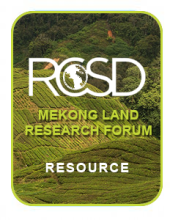/ library resources
Showing items 1 through 9 of 57.This essay argues that an awareness of the historical relation- ships among land use, land tenure, and the political economy of Mongolia is essential to understanding current pastoral land use patterns and policies in Mongolia.
The government of Laos has identified the eradication of poverty as a priority. Given the primarily agricultural character of the country, it has selected land reform as a core policy to reach this goal.
Over the last 14 years, substantial progress has been made in carrying forward the civil law reforms and the programs of ownership transfer in Albania.
The document provides a comprehensive study on past and current land management, including an overview of legislation on pasture access and management, and pratical examples of pasture management in practice.
This paper reviews, discusses and points issues relating to land tenure and their relevance to policy and legal reforms in Uganda.
Numerous methods are available for increasing crop and livestock production in the Ethiopian highlands. Both national and international research institutes have developed technologies that are technically appropriate for these conditions.
Increasing agricultural productivity is an important challenge in Sub-Saharan Africa (SSA). Since the 1960s, agricultural production in SSA has failed to keep up with population growth.
Ethiopia is one of the poorest countries in the world, and its population of more than 70 million people lives mostly in the highlands. The food security of these people is threatened by land degradation and droughts that cause declining and highly variable land productivity.
Paginación
Land Library Search
Through our robust search engine, you can search for any item of the over 73,000 highly curated resources in the Land Library.
If you would like to find an overview of what is possible, feel free to peruse the Search Guide.



